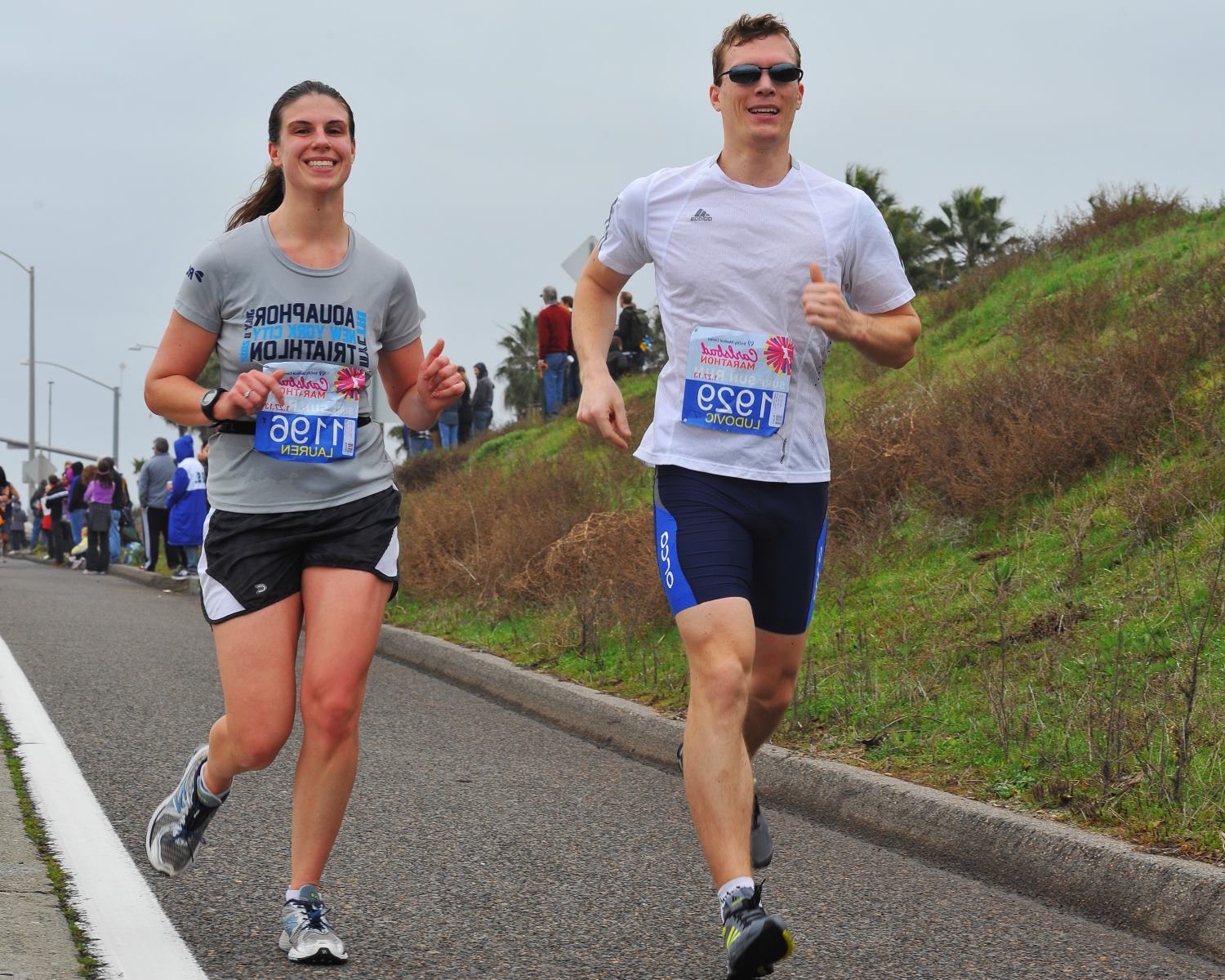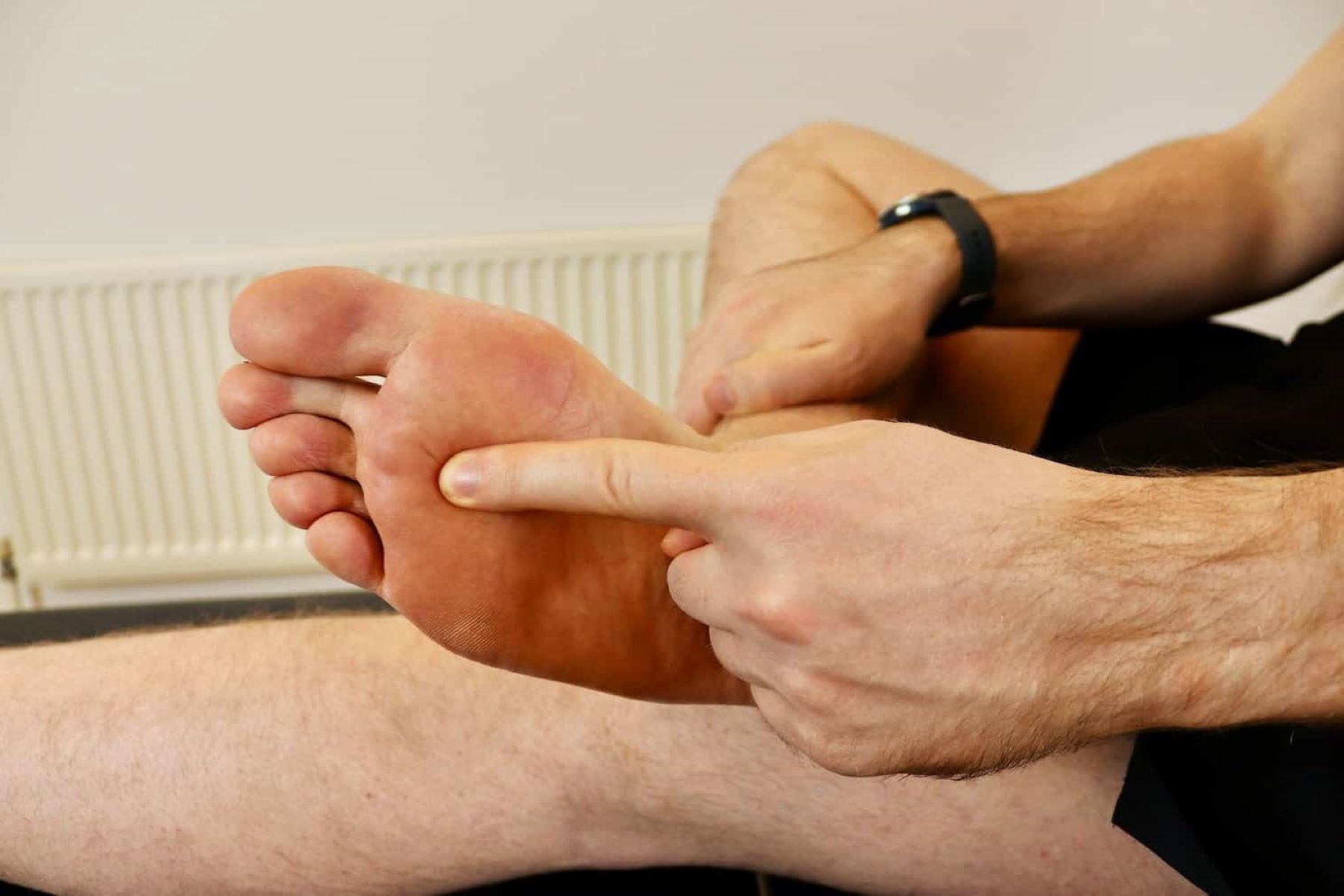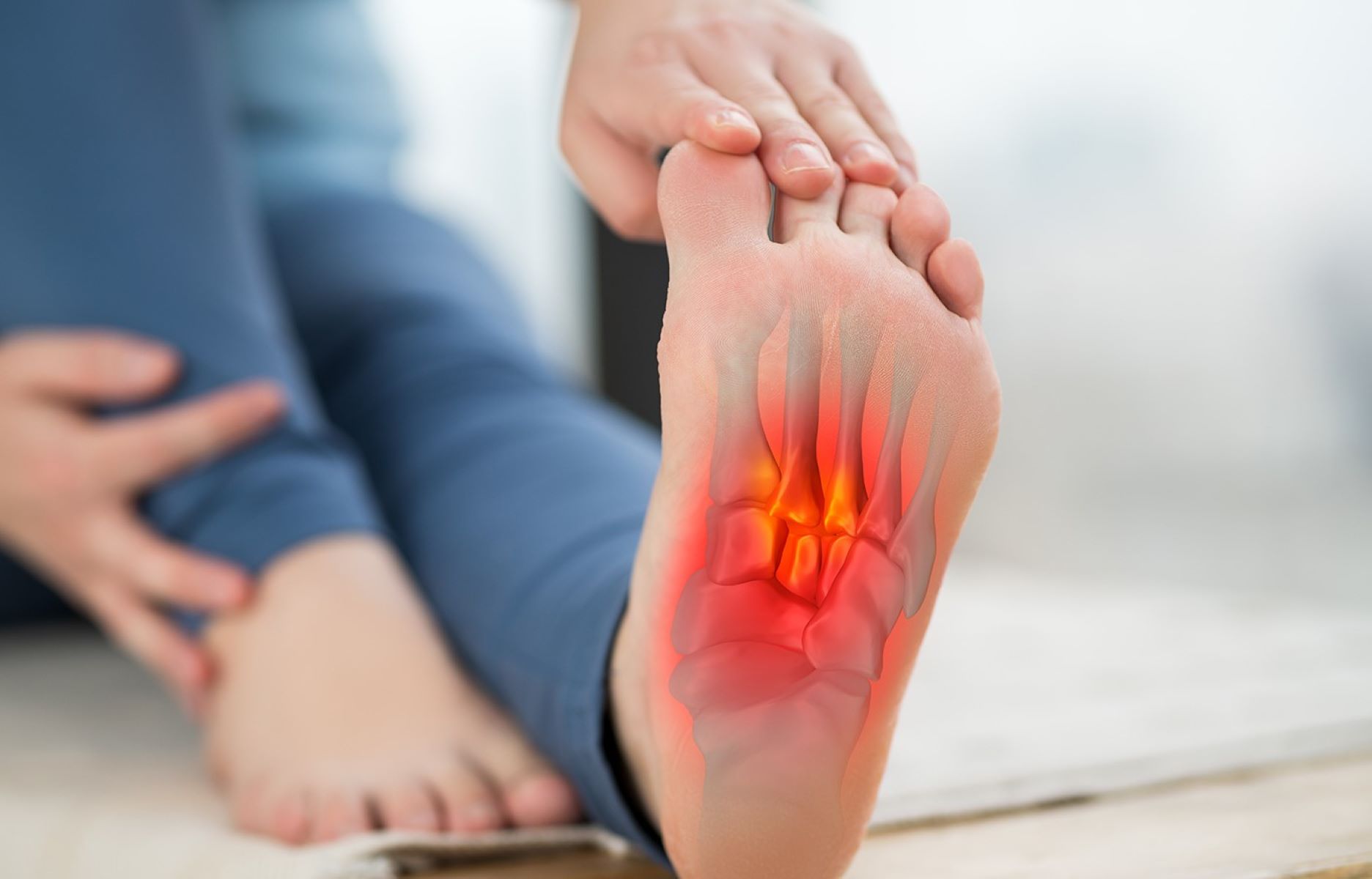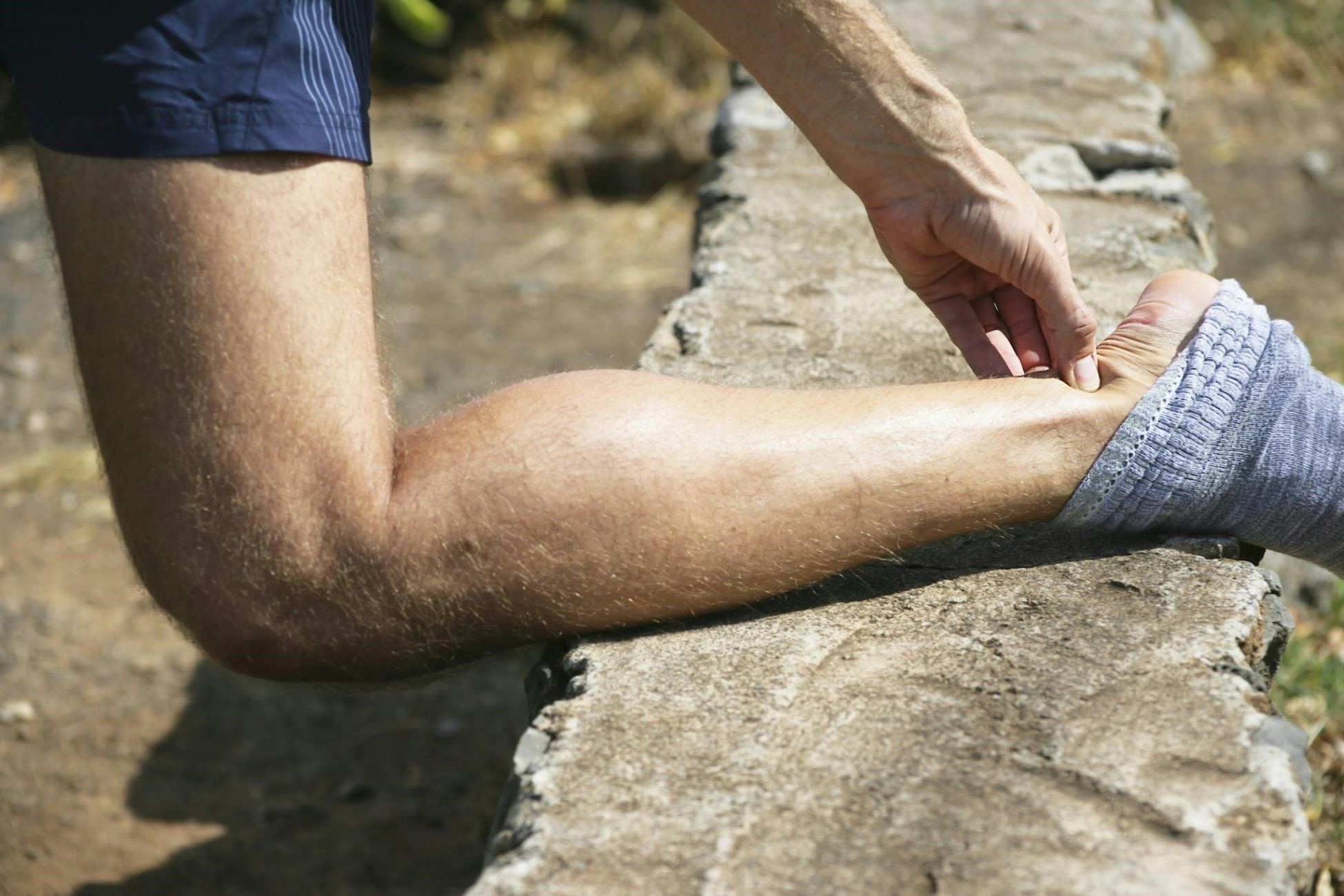Home>Health & Nutrition>Injury Prevention>Causes And Treatment Of Lower Back Pain From Running


Injury Prevention
Causes And Treatment Of Lower Back Pain From Running
Published: February 22, 2024
Learn about the causes and treatment of lower back pain from running, and discover injury prevention tips to keep your back healthy while running.
(Many of the links in this article redirect to a specific reviewed product. Your purchase of these products through affiliate links helps to generate commission for Therunningadvisor.com, at no extra cost. Learn more)
Table of Contents
Introduction
Running is an invigorating and popular form of exercise that offers numerous health benefits, including improved cardiovascular fitness, enhanced mental well-being, and weight management. However, despite its many advantages, running can also lead to lower back pain, a common issue that affects many individuals who engage in this physical activity. Lower back pain from running can be a significant hindrance, impacting one's ability to enjoy the sport and maintain an active lifestyle. Understanding the causes, risk factors, prevention strategies, and treatment options for lower back pain is crucial for runners seeking to alleviate discomfort and continue pursuing their passion for running.
In this comprehensive guide, we will delve into the various aspects of lower back pain from running, shedding light on the common causes, risk factors, prevention and management strategies, as well as treatment options. By gaining a deeper understanding of these key elements, runners can equip themselves with the knowledge and tools necessary to mitigate the risk of lower back pain and address any discomfort that may arise. Whether you are a seasoned marathon runner or someone who enjoys occasional jogs, the insights provided in this article will empower you to make informed decisions and take proactive steps to safeguard your back health while enjoying the many benefits of running.
Common Causes of Lower Back Pain from Running
-
Muscle Strain: The repetitive nature of running can lead to muscle strain in the lower back. When the muscles are overused or subjected to sudden movements, such as sprinting or running on uneven surfaces, they can become strained, causing discomfort and pain.
-
Poor Running Form: Incorrect running form, such as overstriding, hunching over, or leaning too far forward, can place excessive strain on the lower back. This can lead to muscle imbalances and increased stress on the spine, resulting in pain and discomfort.
-
Weak Core Muscles: Insufficient core strength can contribute to lower back pain during running. The core muscles play a crucial role in providing stability and support to the spine. When these muscles are weak, the lower back may bear the brunt of the impact, leading to discomfort and potential injury.
-
Improper Footwear: Wearing worn-out or unsupportive running shoes can impact the body's alignment and contribute to lower back pain. Inadequate cushioning and lack of arch support can lead to poor shock absorption, causing the impact of each stride to reverberate through the body, including the lower back.
-
Overtraining: Engaging in excessive or intense running without allowing sufficient time for recovery can strain the muscles and lead to overuse injuries, including lower back pain. Overtraining can also lead to fatigue and compromised running form, further increasing the risk of back discomfort.
-
Tight Hip Flexors: Tight hip flexor muscles, often a result of prolonged sitting or inadequate stretching, can alter pelvic alignment and increase the strain on the lower back during running. This can lead to discomfort and restricted mobility.
-
Spinal Misalignment: Running with an imbalanced or misaligned spine can exacerbate lower back pain. Poor posture, uneven leg lengths, or underlying spinal conditions can contribute to spinal misalignment, leading to discomfort during running.
Understanding these common causes of lower back pain from running is essential for runners looking to address and prevent discomfort. By recognizing these factors, individuals can take proactive measures to mitigate the risk of lower back pain and enhance their overall running experience.
Risk Factors for Lower Back Pain in Runners
Several risk factors can contribute to the development of lower back pain in runners, potentially impacting their performance and overall well-being. Understanding these risk factors is crucial for identifying potential triggers and taking proactive steps to mitigate the likelihood of experiencing discomfort. By recognizing and addressing these risk factors, runners can safeguard their back health and enjoy a more fulfilling running experience.
-
Inadequate Warm-Up and Cool-Down: Failing to properly warm up before a run and cool down afterward can increase the risk of lower back pain. Without adequate preparation and recovery, the muscles may be more susceptible to strain and injury during the run, leading to discomfort in the lower back.
-
Sedentary Lifestyle: Individuals who lead sedentary lifestyles characterized by prolonged sitting or inactivity may experience weakened core muscles and tight hip flexors, both of which can contribute to lower back pain during running. Incorporating regular movement and targeted exercises to counteract the effects of prolonged sitting is essential for maintaining back health.
-
Previous Injuries: Runners with a history of lower back injuries or musculoskeletal issues may be more prone to experiencing recurrent pain during running. Prior injuries can lead to residual weakness or imbalances, increasing the susceptibility to discomfort in the lower back.
-
Excessive Load-Bearing Activities: Engaging in activities that place significant stress on the lower back, such as heavy lifting or high-impact sports in addition to running, can exacerbate the risk of developing lower back pain. Balancing load-bearing activities and incorporating adequate rest and recovery is essential for minimizing the strain on the lower back.
-
Poor Posture: Maintaining poor posture throughout the day, whether sitting at a desk or standing, can contribute to spinal misalignment and muscle imbalances, increasing the likelihood of experiencing lower back pain during running. Focusing on proper posture and ergonomics in daily activities can help alleviate this risk factor.
-
Nutritional Deficiencies: Inadequate intake of essential nutrients, particularly those crucial for bone and muscle health, can impact the body's ability to support the demands of running. Nutritional deficiencies may compromise muscle function and recovery, potentially contributing to lower back pain.
-
Stress and Mental Well-Being: Psychological stress and emotional strain can manifest physically, leading to increased muscle tension and potential exacerbation of existing lower back discomfort. Managing stress through relaxation techniques, mindfulness, and adequate rest is essential for minimizing this risk factor.
By recognizing these risk factors, runners can take proactive measures to address potential triggers and minimize the likelihood of experiencing lower back pain during running. Incorporating targeted exercises, maintaining a balanced lifestyle, and prioritizing recovery can significantly contribute to mitigating these risk factors and promoting overall back health for runners.
Prevention and Management Strategies for Lower Back Pain
Preventing and managing lower back pain is essential for runners seeking to maintain their physical well-being and continue enjoying the benefits of running. By incorporating effective strategies, individuals can mitigate the risk of lower back discomfort and address any existing pain, thereby enhancing their overall running experience.
Prevention Strategies
-
Proper Warm-Up and Cool-Down: Prior to running, engaging in a dynamic warm-up routine that includes stretching and mobility exercises can prepare the muscles for the demands of running, reducing the risk of strain and injury. Similarly, a thorough cool-down with static stretching can aid in muscle recovery and minimize post-run stiffness.
-
Core Strengthening Exercises: Implementing targeted exercises to strengthen the core muscles, including the abdominals, obliques, and lower back muscles, can provide essential support to the spine during running. Incorporating planks, bridges, and rotational exercises can help improve core stability and reduce the strain on the lower back.
-
Proper Running Form: Focusing on maintaining proper running form, including a slight forward lean, relaxed shoulders, and a mid-foot strike, can alleviate excessive stress on the lower back. Runners should also be mindful of their stride length and cadence to minimize impact and reduce the risk of discomfort.
-
Gradual Progression: Gradually increasing running mileage and intensity allows the body to adapt and strengthen gradually, reducing the risk of overuse injuries, including lower back pain. Implementing a structured training plan that incorporates rest days and gradual progression is crucial for injury prevention.
-
Footwear Selection: Investing in supportive running shoes that provide adequate cushioning and stability can help maintain proper alignment and reduce the impact on the lower back. Regularly replacing worn-out shoes is essential for ensuring optimal support and shock absorption.
Read more: Treating Neck Pain From Running
Management Strategies
-
Active Recovery: Engaging in low-impact activities such as swimming, cycling, or yoga on non-running days can promote active recovery and alleviate muscle tension in the lower back. These activities can help maintain mobility and circulation while reducing the strain on the back muscles.
-
Incorporate Cross-Training: Integrating cross-training activities, such as strength training, Pilates, or yoga, can enhance overall muscle strength and flexibility, contributing to improved posture and reduced risk of lower back pain.
-
Regular Stretching: Implementing a consistent stretching routine that targets the hip flexors, hamstrings, and lower back muscles can alleviate tightness and improve flexibility, reducing the strain on the lower back during running.
-
Seek Professional Guidance: Consulting a physical therapist or a running coach can provide valuable insights into addressing muscle imbalances, refining running mechanics, and developing a tailored plan to manage and prevent lower back pain.
By integrating these prevention and management strategies into their running routine, individuals can proactively address the risk of lower back pain and effectively manage any discomfort that may arise, allowing them to continue pursuing their passion for running with confidence and resilience.
Treatment Options for Lower Back Pain from Running
When lower back pain arises from running, it is essential to explore effective treatment options to alleviate discomfort and facilitate the healing process. By addressing the underlying causes and implementing targeted interventions, runners can regain comfort and mobility, allowing them to resume their running activities with confidence.
Rest and Recovery
Rest is a fundamental aspect of the treatment process for lower back pain from running. Allowing the affected muscles and tissues to recover is crucial for reducing inflammation and promoting healing. During this period, it is important to avoid activities that exacerbate the pain, providing the body with the necessary time to recuperate.
Ice and Heat Therapy
Applying ice packs to the affected area can help reduce inflammation and alleviate pain. The cold therapy constricts blood vessels, diminishing swelling and providing relief. Conversely, heat therapy, such as warm compresses or heating pads, can improve blood circulation, relax muscles, and promote healing. Alternating between ice and heat applications can offer a comprehensive approach to managing lower back pain.
Read more: 4 Common Causes Of Knee Pain After Running
Over-the-Counter Pain Relief
Over-the-counter nonsteroidal anti-inflammatory drugs (NSAIDs) such as ibuprofen or naproxen can be used to alleviate pain and reduce inflammation. When used as directed, these medications can provide temporary relief from lower back discomfort, enabling individuals to engage in activities with greater comfort.
Physical Therapy
Engaging in physical therapy sessions tailored to address lower back pain can be highly beneficial for runners. A skilled physical therapist can design a personalized exercise program to strengthen the core muscles, improve flexibility, and correct any imbalances contributing to the pain. Additionally, manual therapy techniques and targeted stretches can aid in alleviating discomfort and restoring optimal function.
Chiropractic Care
Seeking chiropractic care from a qualified professional can offer runners access to spinal adjustments and manipulations aimed at realigning the spine and addressing musculoskeletal imbalances. Chiropractic interventions can help reduce pain, improve mobility, and enhance overall spinal health, contributing to a more comfortable running experience.
Massage Therapy
Massage therapy can be a valuable treatment option for lower back pain resulting from running. Skilled massage techniques can help alleviate muscle tension, improve circulation, and promote relaxation. Additionally, targeted massage sessions can aid in releasing tightness in the lower back muscles, fostering a sense of relief and comfort.
Read more: Possible Causes Of Knee Pain While Cycling
Acupuncture
Acupuncture, a traditional Chinese medicine practice, involves the insertion of thin needles into specific points on the body to alleviate pain and promote healing. For runners experiencing lower back pain, acupuncture sessions can offer a holistic approach to managing discomfort, addressing both physical and energetic imbalances.
Professional Evaluation and Diagnosis
In cases of persistent or severe lower back pain, seeking a professional evaluation from a healthcare provider is essential. A thorough assessment can help identify any underlying conditions or structural issues contributing to the pain. Diagnostic imaging, such as X-rays or MRI scans, may be recommended to gain a comprehensive understanding of the root cause of the discomfort.
By exploring these treatment options and seeking appropriate professional guidance, runners can effectively address lower back pain resulting from running, facilitating the healing process and restoring comfort. It is important to approach treatment holistically, considering the individual's unique needs and preferences to create a tailored plan for recovery and long-term back health.
Conclusion
In conclusion, lower back pain is a prevalent issue that can significantly impact runners, hindering their performance and diminishing the joy derived from this invigorating physical activity. Understanding the causes, risk factors, prevention strategies, and treatment options for lower back pain resulting from running is paramount for individuals seeking to maintain their back health and continue enjoying the numerous benefits of this popular form of exercise.
By recognizing the common causes of lower back pain from running, including muscle strain, poor running form, weak core muscles, improper footwear, overtraining, tight hip flexors, and spinal misalignment, runners can take proactive measures to address these factors and minimize the risk of discomfort. Additionally, identifying the risk factors associated with lower back pain in runners, such as inadequate warm-up, sedentary lifestyle, previous injuries, excessive load-bearing activities, poor posture, nutritional deficiencies, and stress, empowers individuals to implement targeted strategies to mitigate these risks and promote back health.
The prevention and management strategies outlined in this guide offer valuable insights for runners looking to safeguard their back health and minimize the likelihood of experiencing lower back pain. From proper warm-up and cool-down routines to core strengthening exercises, gradual progression, footwear selection, active recovery, cross-training, regular stretching, and seeking professional guidance, these strategies provide a comprehensive approach to preventing and managing lower back pain from running.
Furthermore, the treatment options highlighted in this guide, including rest and recovery, ice and heat therapy, over-the-counter pain relief, physical therapy, chiropractic care, massage therapy, acupuncture, and professional evaluation and diagnosis, offer individuals a range of interventions to address lower back pain and facilitate the healing process.
By integrating these insights into their running routine and seeking appropriate professional guidance when needed, individuals can proactively address lower back pain, promoting a more comfortable and fulfilling running experience. It is essential to approach back health holistically, considering the individual's unique needs and preferences to create a tailored plan for recovery and long-term well-being.
Ultimately, by equipping themselves with the knowledge and tools presented in this guide, runners can navigate the challenges associated with lower back pain, allowing them to pursue their passion for running with confidence, resilience, and a renewed focus on maintaining their back health.













